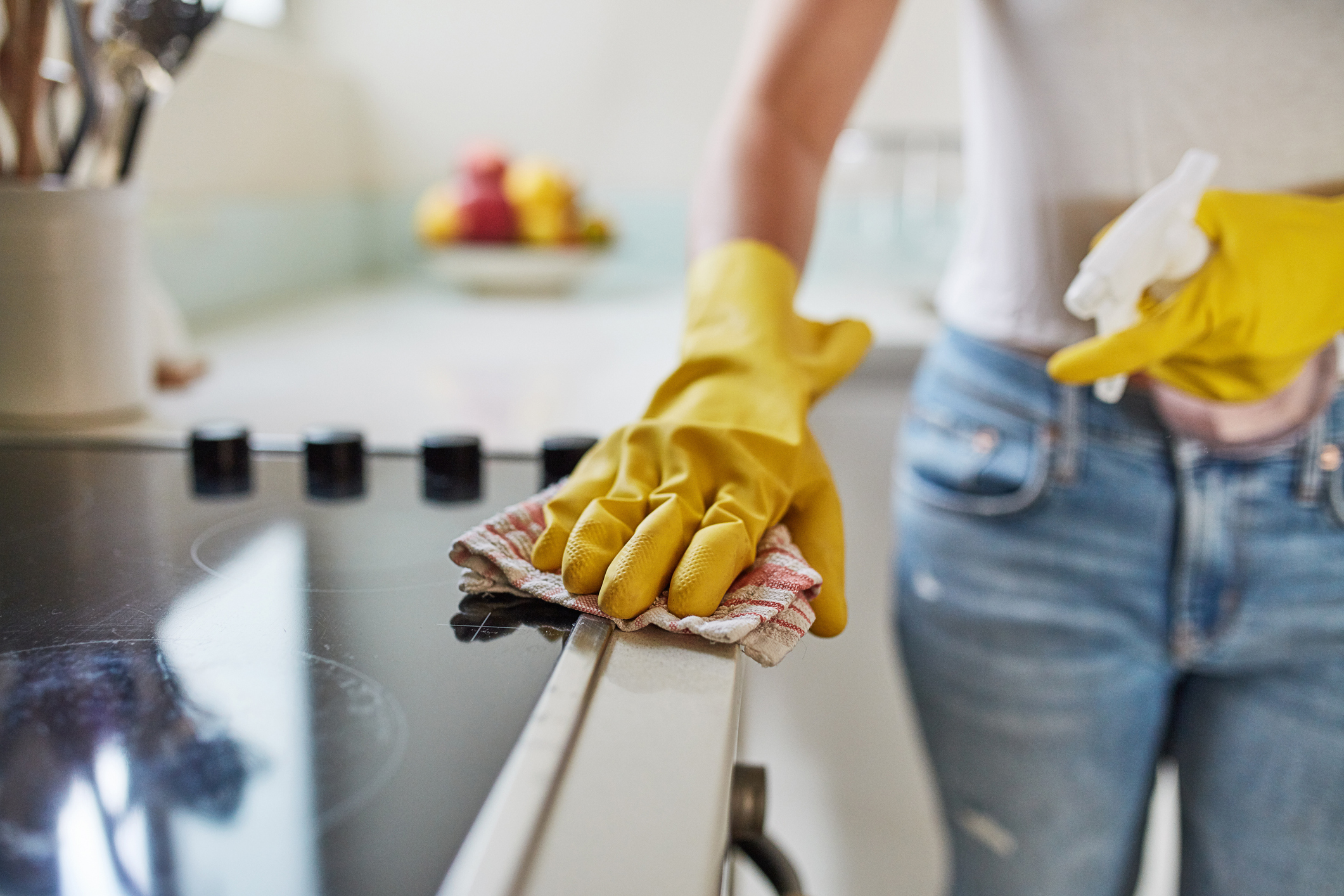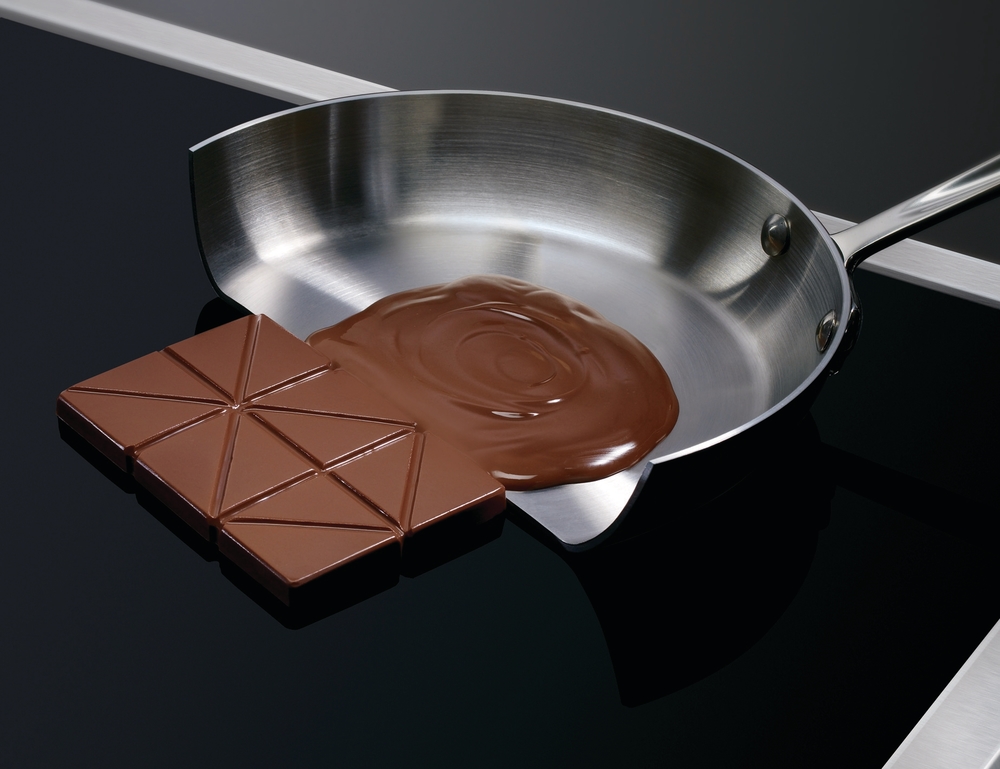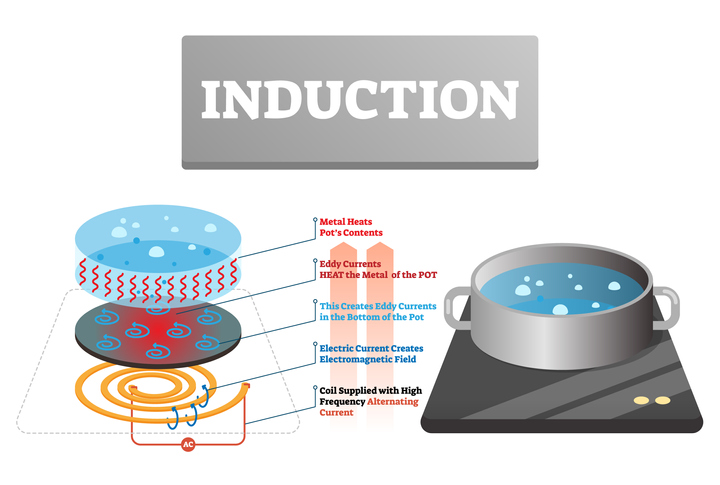
At a Glance:
Tips on Cleaning Your Induction Cooktop
What Not To Do When Cleaning Your Induction Cooktop
FAQs: How to Clean Induction Cooktops
A reliable, highly efficient cooktop is a dream in the kitchen. It can help you craft some incredible meals and elevate your cooking experience to another level. However, the downside of this is the messiness a large cooking endeavor can create. Often, grease, food crumbs, burnt pieces of this or that, and other grime can cause a large mess on your cooktop once the meal is complete. Thus, it is imperative to know how to clean your cooktop, and how to clean it effectively. In the following article, read about how to clean induction cooktops, and how to effectively bring your kitchen back to its former, pristine glory.
Explore Our Cooktop Selection
If you're looking for a high-tech cooking experience, consider using an induction cooktop for your kitchen.
Induction Cooktop OptionsTips on Cleaning Your Induction Cooktop
Cleaning cooktops is not always at the top of the chore list. However, it is an essential part of keeping a clean kitchen. Plus, it really is satisfying when you finish cleaning and get to relish in the gleam of your polished, pristine stovetop. Below we have listed some of the best ways we know for how to clean induction cooktops and clean them well. You don’t need to be overwhelmed by your dirty cooktop anymore- follow our steps and you, too, will be able to have a gleaming stovetop once more.
Clean Spills Promptly
Deal with spills and splatters as soon as possible. The longer they sit, the harder they can be to remove. This may seem trivial, but it is huge when it comes to keeping your cooktop clean. If food or grease sits for a long time, it can cause irreversible damage to your stove in some cases. Thus, it is imperative to wipe up spills straight away to avoid this.
Use Induction Cooktop Cleaner
Invest in a high-quality induction cooktop cleaner. These are specifically designed to clean and protect the surface without causing damage. You can look up different cleaning solutions with a simple internet search, but we recommend brands such as Weiman, Bar Keepers Friend, and Cerama Bryte for your cleaning needs. You can also consider using a cooktop protectant or polish after cleaning. This can help maintain the shine and make future cleanings easier.
Use Vinegar and Baking Soda or Lemon Juice
For tough stains, you can make a paste with equal parts water and baking soda. Apply it to the stain, let it sit for a few minutes, and then gently scrub it with a soft cloth. Then, rinse it thoroughly. Oftentimes, this unique mixture is the magic touch that will remove your stain. Lemon juice is another great, natural option for removing stains. Since it is a natural acid, it has unique cleaning powers that can help with stains. You can apply some lemon juice to the stain, then let it sit for a few minutes. After enough time has passed, wipe the grime away with a soft cloth.
Avoid Excessive Pressure
While cleaning, avoid applying excessive pressure, especially if using a scraper or abrasive pad. Though it may clean your stain, it may damage your cooktop. Gentle, even pressure is generally sufficient to remove a stain and spare your stove in the process. It is possible to clean glass stovetops without damaging them if you use care and precision rather than force.
Avoid Harsh Chemicals
Stay away from abrasive cleaners, bleach, ammonia-based products, or any cleaners that aren't specifically designed for induction cooktops. They may damage your cooktop in the long run. Do your research and ensure your cleaning solution is safe for your cooktop surface before use.
Use a Razor Blade Scraper
Some induction cooktops come with a razor blade scraper for more stubborn residue. Be sure to use it carefully, and at a low angle to avoid scratching. This can be a helpful tool for pieces of food residue that will not come off when wiped.
Microfiber Cloth for Buffing
After cleaning with a cleaning wipe or solution, use a microfiber cloth to buff the surface. This can help bring out the shine of your surface and give a shinier, brighter look to your cooktop.
Related: Cooktop vs. Range: Which Will Benefit Your Kitchen More?
What Not To Do When Cleaning Your Induction Cooktop

Avoid Abrasive Materials
Do not use abrasive materials like steel wool, scouring pads, or abrasive sponges or cleaners. They can scratch and damage the glass surface. Ensure that the sponge or cloth you're using is clean. Dirt particles can scratch the surface, and abrasive sponges can cause damage.
Do Not Use Harsh Chemicals
Avoid using harsh chemicals, such as bleach or ammonia-based cleaners, as they can be too abrasive for the cooktop's surface.
Avoid Excessive Force
Do not apply excessive pressure when cleaning. Use gentle, even pressure to avoid scratching or damaging the surface.
Don't Use the Cooktop as a Cutting Board
Avoid chopping or cutting directly on your cooktop surface. This can leave scratches and damage to the glass.
Do Not Clean a Hot Cooktop
Always let the cooktop cool down before cleaning. Cleaning a hot surface can cause something called thermal shock, which could potentially damage the glass.
Avoid Boiling-over Spills
While it's inevitable that spills will occur, try to avoid letting pots or pans boil over. Boiled-over substances can be harder to clean if they cool and harden.
Avoid Using Improper Cookware
Do not use cookware with rough or uneven bottoms. Only use pots and pans with smooth, flat surfaces to prevent scratches on your cooktop surface.
Avoid Using Unapproved Cleaners
Stick to cooktop cleaners that are specifically designed for use on glass or ceramic surfaces. Using unapproved products may cause damage to your cooktop.
Do Not Apply Excessive Heat
Avoid using high heat settings for extended periods for cleaning purposes. This can potentially damage the cooktop. You should also avoid using steam cleaners to clean your induction cooktop. The moisture can seep into the internal components, leading to electrical problems in the long run.
Don’t Ignore Deep Stains
Don't let tough stains sit for too long without attempting to clean them. The longer they remain, the harder they can be to remove.
Avoid Using Metal Scrapers at High Angles
If your cooktop comes with a razor blade scraper, use it at a low angle to avoid scratching the surface. Don’t rush, and carefully utilize this tool, being careful not to further damage your cooktop surface.
Related: Appliance Stores MN: Tony's Appliance Reviews
FAQs: How to Clean Induction Cooktops

What do you use to clean an induction cooktop?
To clean an induction cooktop, you'll need a few essential items: a soft cloth or sponge, a non-abrasive scrubbing pad or scraper, an induction cooktop cleaner (specifically designed for glass or ceramic surfaces), warm water, and mild dish soap. First, start by wiping down the cooktop after each use with a soft cloth or sponge to remove any spills. For stubborn residue, use a non-abrasive scrubbing pad or scraper. Apply a small amount of cooktop cleaner, then buff with a cloth. Rinse with warm water and dry thoroughly. Avoid abrasive materials and harsh chemicals, and always consult your cooktop's manual for specific cleaning instructions.
How do you clean a black induction cooktop?
To clean a black induction cooktop, start by allowing it to cool completely. Then, remove any loose debris with a soft cloth or sponge. Apply a few drops of induction cooktop cleaner, being sure to spread it evenly. Gently scrub any stubborn stains with a non-abrasive pad or scraper. Then, rinse the surface with a clean, damp cloth, removing any residue. Buff the cooktop with a dry cloth for a polished finish, but be sure to avoid abrasive materials, harsh chemicals, and excessive force. Regularly wipe down your stovetop after each use to prevent buildup of grease or grime. Lastly, periodically inspect the surface for scratches or damage, and address them promptly if you find them.
Can you use Windex on induction cooktop?
No, it is not recommended for anyone to use Windex on their induction cooktop. Windex contains chemicals that may not be suitable for the glass surface of your stove and might cause damage. Instead, use a cooktop cleaner specifically designed for glass or ceramic surfaces for safe and effective cleaning.
How do you remove burnt-on grease from an induction cooktop?
To remove burnt-on grease from an induction cooktop, follow these steps- Allow the cooktop to cool off completely. Then, gently scrape off excess residue with a non-abrasive scraper. Apply an induction cooktop cleaner or a mixture of equal parts water and baking soda, and use a soft cloth or sponge to scrub the affected area, applying gentle pressure. Rinse with a clean, damp cloth, then dry thoroughly. For stubborn stains, repeat the process if necessary. Avoid abrasive materials to prevent surface damage.
Related: The 3 Best Ways to Clean the Space Between Your Oven & Countertop [+ Bonus Tips]!
Why Trust Tony’s Appliance
Tony's Appliance is a family-owned and operated business that has been supplying the South Metro area with the best appliances for over 35 years. We believe in providing experienced, honest service that is prompt and economical. Our mission is to provide the best quality for the money spent, and our customers are the reason we've been successful for so long.
We are proud to say we have earned our customer’s trust over the years. Whether you’re looking for a complete remodel of your home’s appliances or a new kitchen appliance, we have got you covered! Our experienced professionals know how to deliver your appliances safely and properly install them.
Shop Induction Cooktops at Tony’s Appliance Today
We are proud to service the Burnsville, MN, area for all your indoor and outdoor appliance needs. Come by and talk to one of our specialists to discover the difference between shopping locally and shopping at a big-box store. Or take a look at our online catalog to find all you need! Whether you have a simple question or need some guidance, give us a call at 952-435-2442, use our chat feature, or visit us in person.
